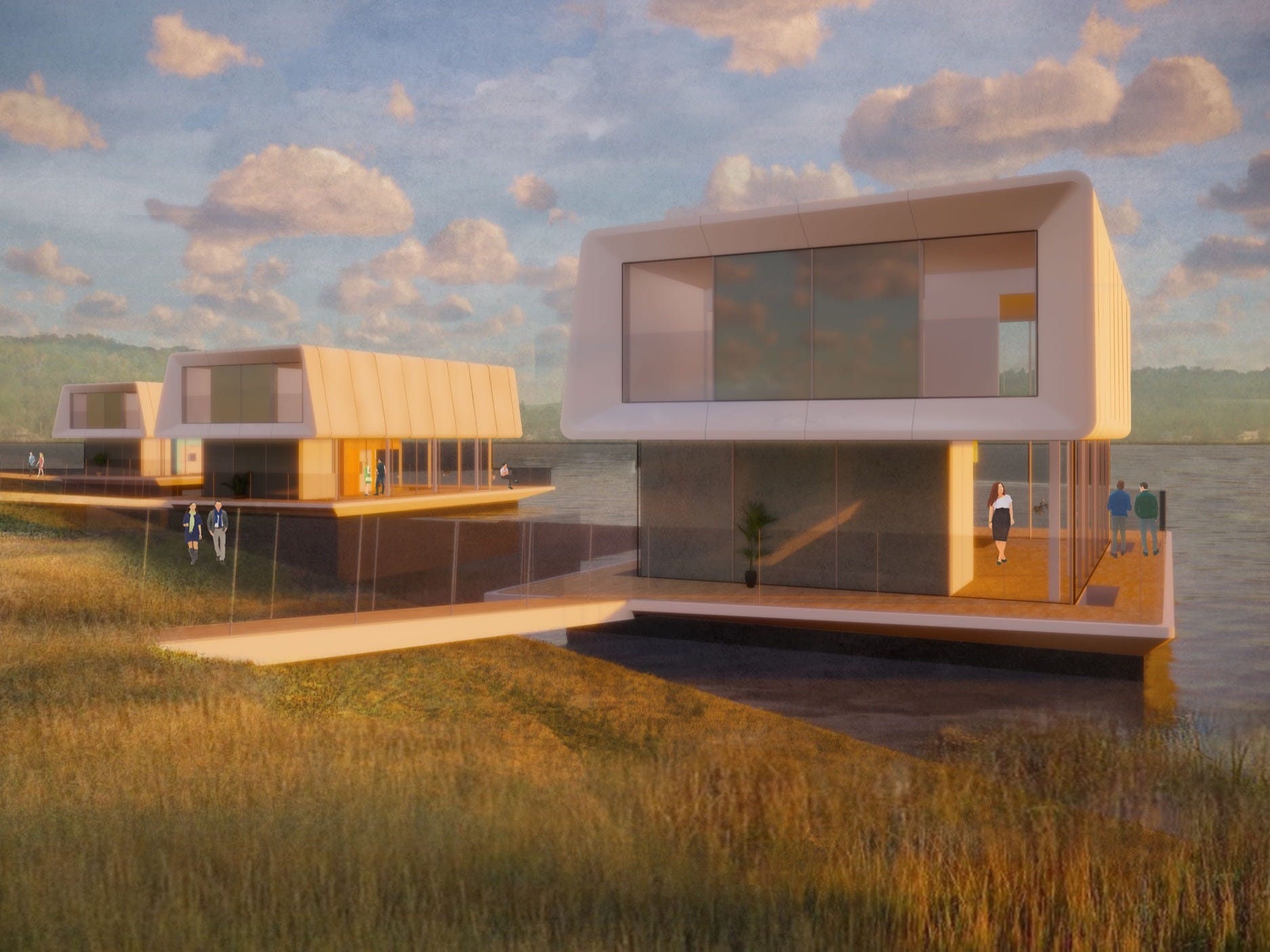- Design studio Grimshaw created a concept for a floating home that can survive rising sea levels.
- The dwellings are modular, so components can be mass-produced in factories and assembled at a low cost.
- Energy will come from solar panels, with shaded lower pontoons using little energy.
- Visit Business Insider’s homepage for more stories.
Design studio Grimshaw and manufacturers Concrete Valley collaborated on their design for Modular Water Dwellings. The structures are essentially floating homes, designed to withstand the upcoming effects of climate change and use energy more sustainably.
The floating homes will be made on an assembly line, creating a modular final product from several standardized pieces. This is an approach taken by many tiny home companies to make construction more affordable, and allow customers to customize their homes based on available pieces.
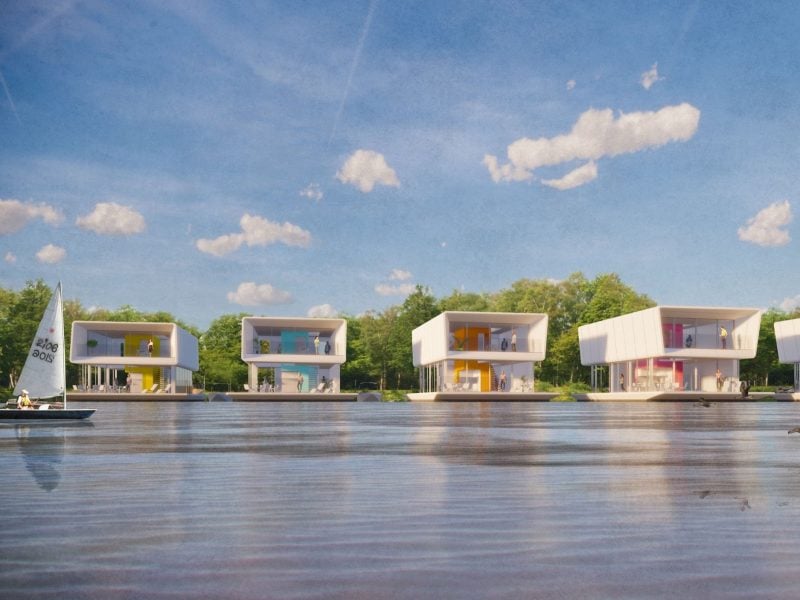
Concrete Valley’s manufacturing facility sits on a waterway in the Netherlands, which will allow for the homes to be assembled at the factory and transported to their destinations, ready to move into. Grimshaw told Business Insider that this also reduces the total energy used in construction because no on-site assembly is required.
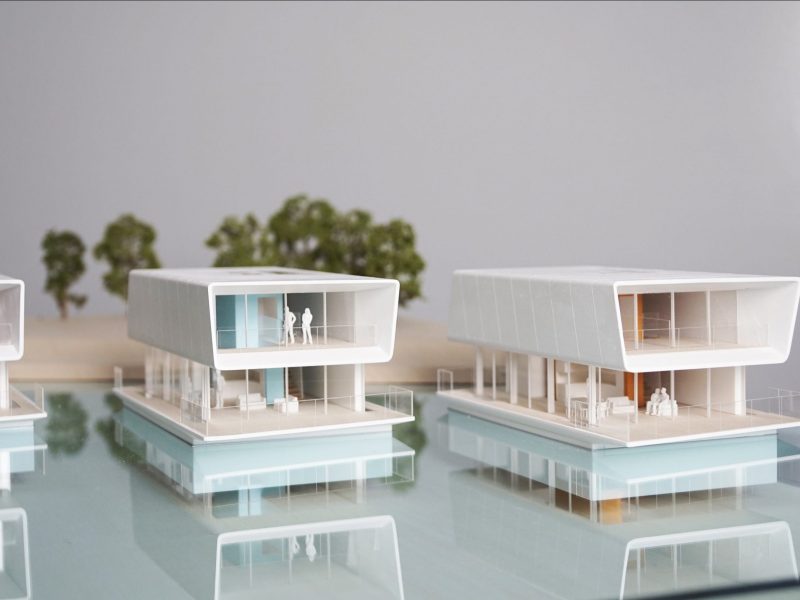
The designers cited affordability and sustainability as reasons for making this design, which they say would offer "affordable housing, free of the constraints of land-based construction and resilient to the mounting threat of flooding from rising sea-levels."
According to a UN report from last year, sea levels could rise as much as three feet within 80 years, which would displaces hundreds of millions of people.
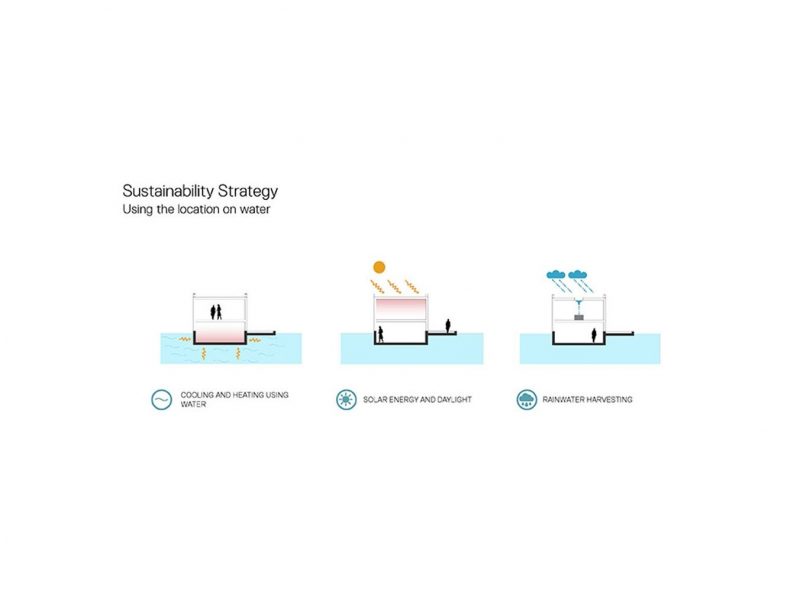
Designers use the water under the dwelling as part of temperature regulation, using it to heat and cool. The upper level also has solar panels to collect energy during the day, and harvest rainwater for an off-the-grid possibility. Heat exchangers also create a communal energy supply for a group of dwellings, with the potential for almost zero net energy use.
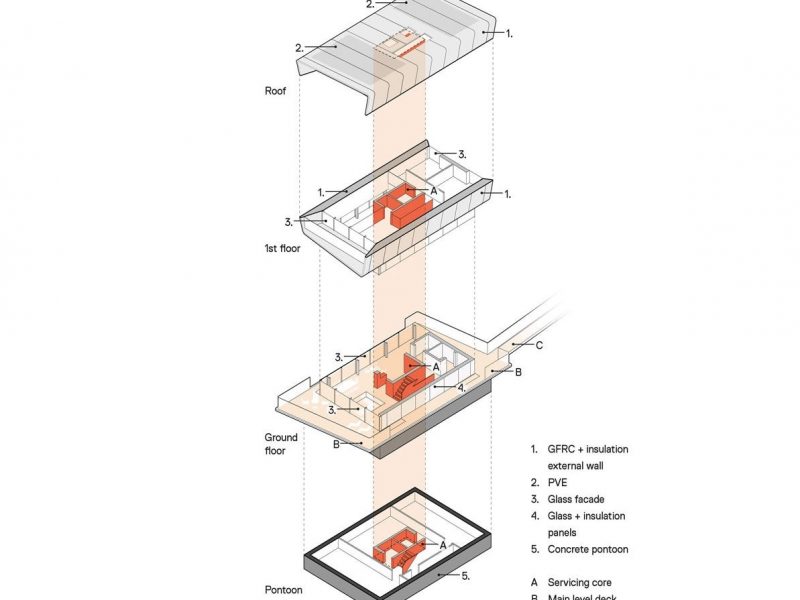
The rest of the design also contributes to low energy use. Each level is well insulated, with lower levels that naturally stay cool due to shade and the concrete pontoons.
Designers believe that the aspects of the home that make it so unique, like its location on the water, and the potential community of other water dwellings, can contribute to the health and wellbeing of residents. People living in the homes would be close to nature, with beautiful views and access to water. They also promote the idea of communal water activities, like fishing or parasailing, or even using the pontoons to create shared communal spaces like floating gardens and terraces.
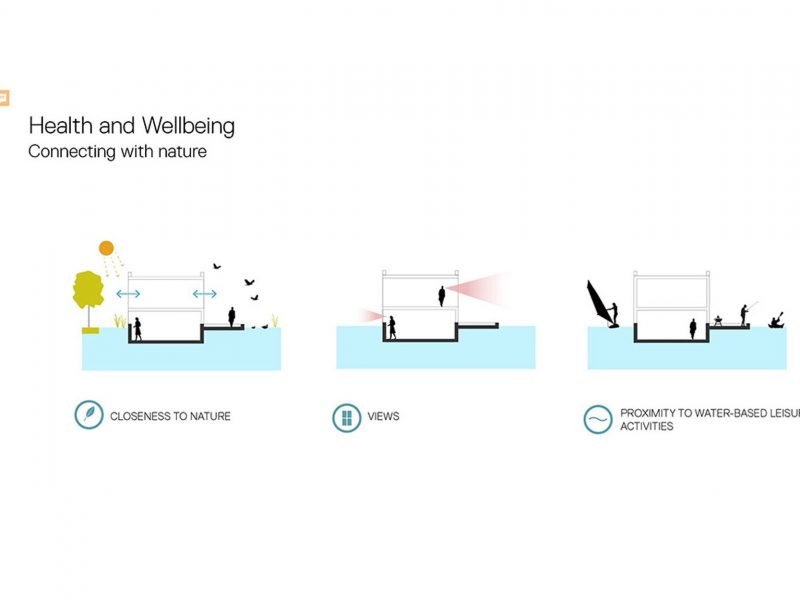
For now, the Modular Water Dwellings are still in the development stage as Grimshaw and Concrete Valley continue to create prototypes, though they say that they plan to bring them to the market once they're satisfied with the quality and affordability.

